External links
- "Zachrisson, Robert Eugen". Nordisk familjebok (2nd ed.). 1922 – via Project Runeberg.
- "Zachrisson, Robert Eugen". Vem är det 1933– via Project Runeberg.
Robert Eugen Zachrisson, born 15 January 1880 in Karlskrona, Sweden and died 28 July 1937, [1] was a Swedish philologist.
Zachrisson became a student in 1900, Bachelor of Arts in 1902, Licentiate of Philosophy in 1908, PhD and Associate Professor in the English language in 1909, all at the University of Lund. He was from 1910 to 1921 a Lecturer in German and English at the Högre lärarinneseminariet in Stockholm, and was named to the professorship of English in Uppsala in 1911 and in Gothenburg in 1913 as the professor of English at the University of Uppsala. There his students included Rune Forsberg. [2] Zachrisson's efforts in philology consist partly of historically oriented theses, in toponymy and pronunciation history, and of modern grammar and stylistics.
Zachrisson discussed Nordic influences in English place-names in his research, as well as Roman, Celtic and Saxon influence on English, and the etymology of place-names. His further work added to our understanding of the pronunciation rules and history of pronunciation in Modern English from 1400-1700, and especially during Shakespeare's time. In 1930, Zachrisson made a noted effort in the issue of world languages by launching a simplified English spelling system: Anglic. He also founded the journal Studia Neophilologica in 1928. At the time of his death, he was working to create a dictionary of Old English place-names. [2]

The Great Vowel Shift was a series of changes in the pronunciation of the English language that took place primarily between 1400 and 1700, beginning in southern England and today having influenced effectively all dialects of English. Through this vowel shift, the pronunciation of all Middle English long vowels was changed. Some consonant sounds changed as well, particularly those that became silent; the term Great Vowel Shift is sometimes used to include these consonantal changes.
Old English, or Anglo-Saxon, is the earliest recorded form of the English language, spoken in England and southern and eastern Scotland in the early Middle Ages. It developed from the languages brought to Great Britain by Anglo-Saxon settlers in the mid-5th century, and the first Old English literary works date from the mid-7th century. After the Norman conquest of 1066, English was replaced, for a time, by Anglo-Norman as the language of the upper classes. This is regarded as marking the end of the Old English era, since during this period the English language was heavily influenced by Anglo-Norman, developing into a phase known now as Middle English in England and Early Scots in Scotland.
The Swedish alphabet is a basic element of the Latin writing system used for the Swedish language. The 29 letters of this alphabet are the modern 26-letter basic Latin alphabet plus Å, Ä, and Ö, in that order. It contains 20 consonants and 9 vowels. The Latin alphabet was brought to Sweden along with the Christianization of the population, although runes continued in use throughout the first centuries of Christianity, even for ecclesiastic purposes, despite their traditional relation to the Old Norse religion. The runes underwent partial "latinization" in the Middle Ages, when the Latin alphabet was completely accepted as the Swedish script system, but runes still occurred, especially in the countryside, until the 18th century, and were used decoratively until mid 19th century. Popular literacy is thought to have been higher with the simplified Younger Futhark runes, than in the first centuries of use of the Latin alphabet.

A rune is a letter in a set of related alphabets known as runic alphabets native to the Germanic peoples. Runes were used to write various Germanic languages before they adopted the Latin alphabet, and for specialised purposes thereafter. In addition to representing a sound value, runes can be used to represent the concepts after which they are named (ideographs). Scholars refer to instances of the latter as Begriffsrunen. The Scandinavian variants are also known as futhark or fuþark ; the Anglo-Saxon variant is futhorc or fuþorc.

Anglo-Saxon runes are runes used by the early Anglo-Saxons as an alphabet in their writing system. The characters are known collectively as the futhorc from the Old English sound values of the first six runes. The futhorc was a development from the 24-character Elder Futhark. Since the futhorc runes are thought to have first been used in Frisia before the Anglo-Saxon settlement of Britain, they have also been called Anglo-Frisian runes. They were likely to have been used from the 5th century onward, recording Old English and Old Frisian.

Paul Petter Waldenström was a Swedish lecturer, priest in the Church of Sweden and theologian, member of the Riksdag, and writer, who became the most prominent leader of the free church movement in late 19th-century Sweden.

The Embassy of Sweden in Prague is Sweden's diplomatic mission in the Czech Republic. It's located on Úvoz street, in Hradčany, the castle region of Prague. The embassy's staff work with various issues in several areas – politics, economy, press and information, culture, administration and consular affairs as well as defence issues.

Gimo is a small town situated in Östhammar Municipality, Uppsala County, Sweden with 2,765 inhabitants in 2017. The town is located about 20 km west of the Baltic Sea coast and 50 km north of Uppsala. Gimo is best known for the production plant of Sandvik Coromant with 1,500 employees (2019).

Lieutenant General Gustaf Peder Wilhelm Dyrssen was a Swedish Army officer and Olympic modern pentathlete.
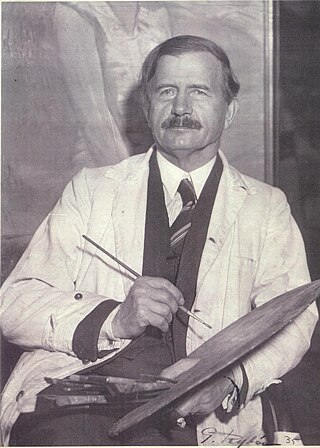
David August Wallin was a Swedish artist. In 1932 he won an Olympic Gold Medal in the art competitions of the Olympic Games in Los Angeles for his oil painting "At the Seaside of Arild".
Robert Millar was an Irish born, Norwegian advertising executive and author. Each year the Trondheim Marketing Association awards the Robert Millar Prize in his honour.
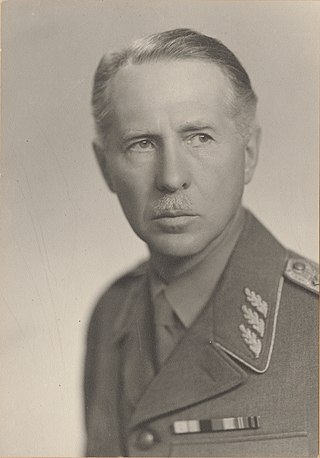
Lieutenant General Count Wilhelm Archibald Douglas was a Swedish Army officer and nobleman who served as Chief of the Army from 1944 to 1948.
Sunna was a Saxon chief whose people were widespread in eastern Berkshire, southern England. A number of English place names are derived from this name including Sonning, Sonning Eye, Sunbury, Sunningdale, Sunninghill and Sunningwell, many close to the River Thames.

Olaus or Olof Verelius was a Swedish scholar of Northern antiquities who published the first edition of a saga and the first Old Norse-Swedish dictionary and is held to have been the founder of the Hyperborean School which led to Gothicism.
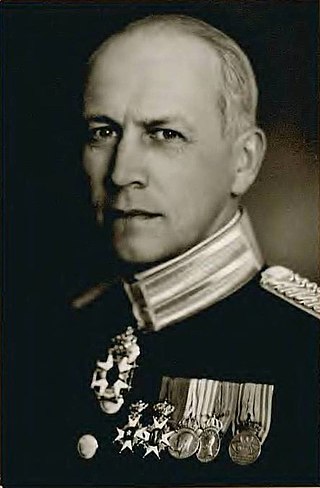
Lieutenant General Carl Henry Tottie was a Swedish Army officer. Tottie's senior commands include Executive Officer of Svea Life Guards, Chief of the Army Staff and the General Staff Corps and military commander of the II Military District.
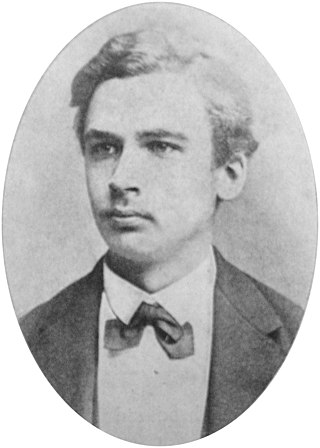
Harald Sohlman,, was a Swedish publisher.

Lieutenant General Johan Helge Fritiof Söderbom was a senior Swedish Army officer. Söderbom served as head of the Quartermaster Staff from 1928 to 1935 and was Quartermaster-General and as commanding officer of the Swedish Army Quartermaster Corps from 1935 to 1946.
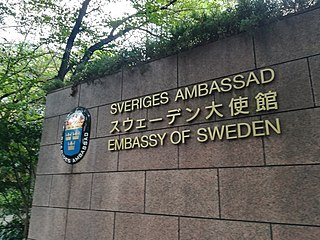
The Embassy of Sweden in Tokyo is Sweden's diplomatic mission in Japan. The mission was opened in 1906. It's located in the Roppongi district in Minato, Tokyo since 1959. The current embassy building was inaugurated in 1991. The ambassador since 2019 is Pereric Högberg. The ambassador has a dual accreditation to Marshall Islands, the Federated States of Micronesia and Palau.
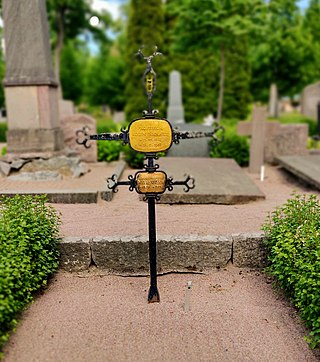
Robert (Robin) Sanno Fåhræus, born 15 October 1888 in Stockholm, died 18 September 1968 in Lund, was a Swedish medical researcher noted for his contributions to hemorheology.
Rune Forsberg was a Swedish scholar of Old English.